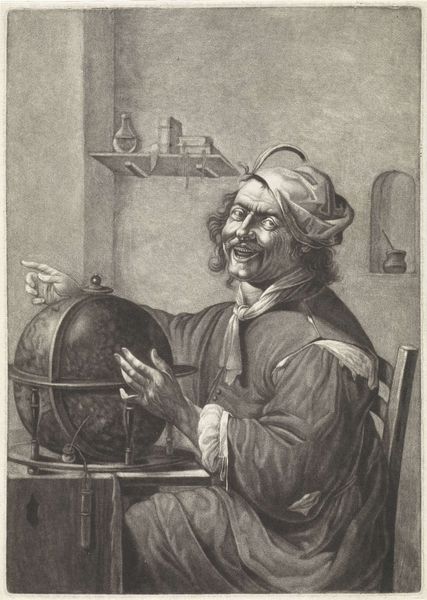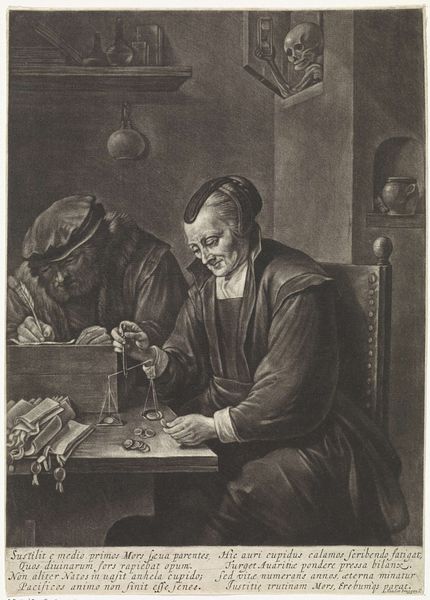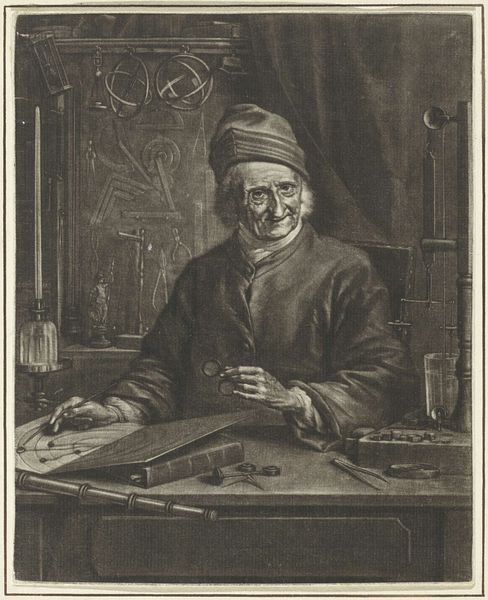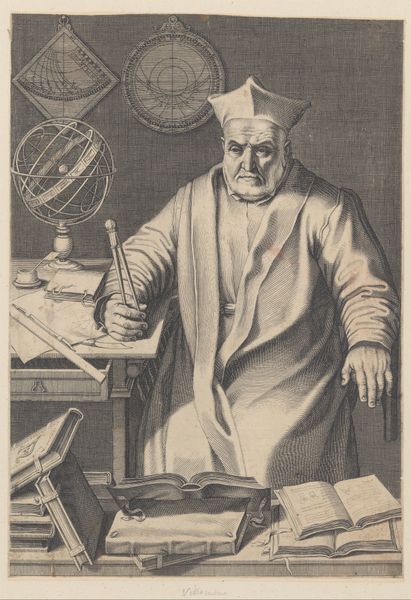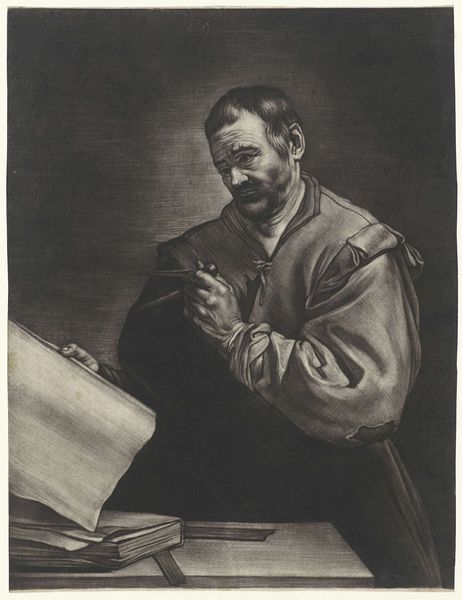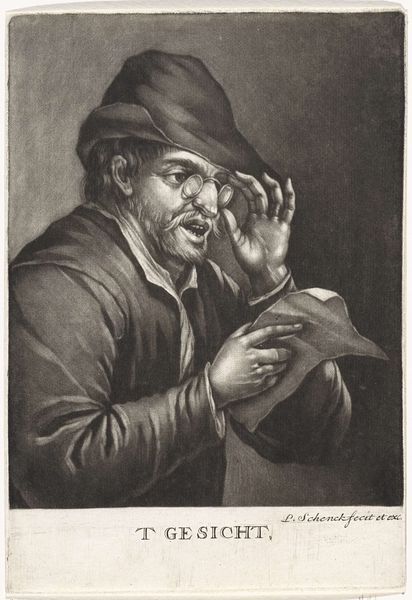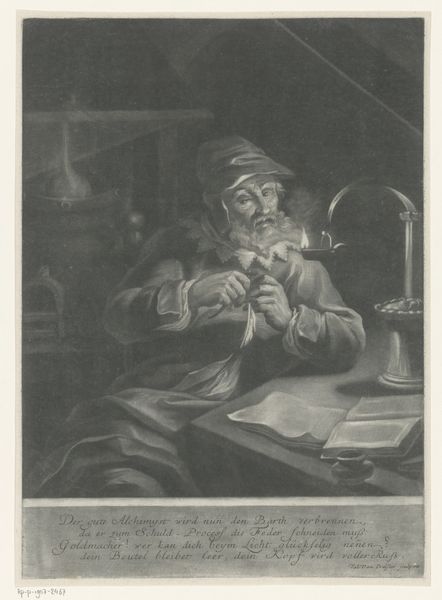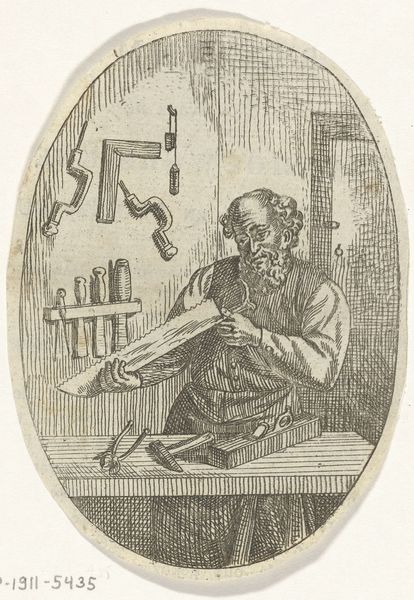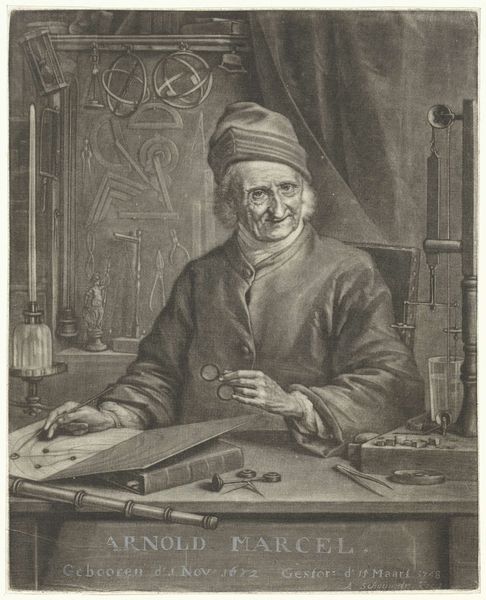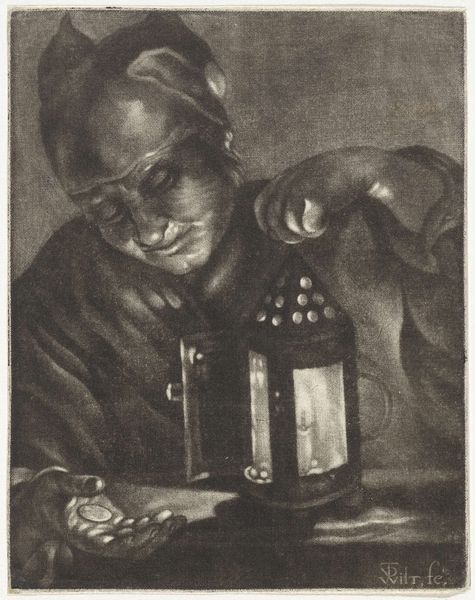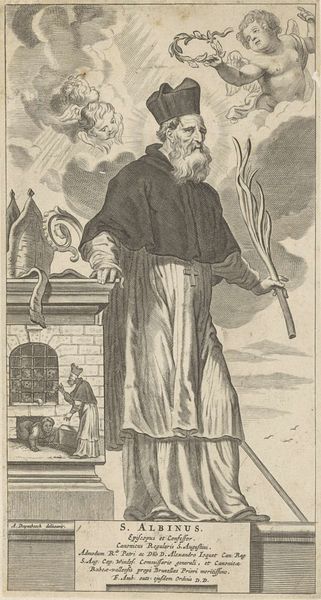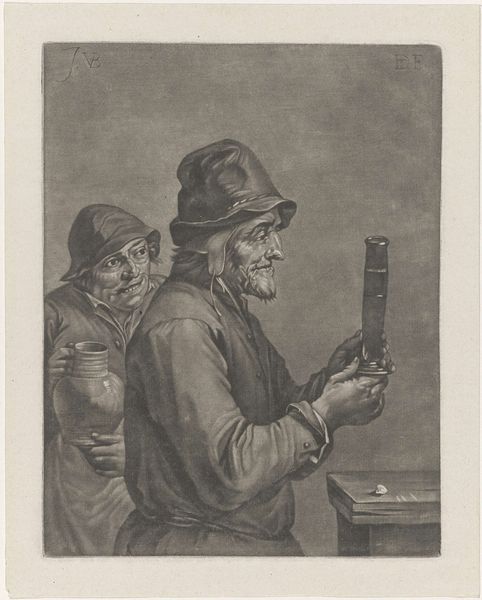
print, engraving
#
portrait
#
baroque
# print
#
charcoal drawing
#
genre-painting
#
northern-renaissance
#
engraving
#
portrait art
Dimensions: height 263 mm, width 187 mm
Copyright: Rijks Museum: Open Domain
Editor: This is *Heraclitus Weeping*, an engraving made sometime between 1659 and 1726 by Jan van der Bruggen. The figure's face is really striking. His expression seems almost… pained? What can you tell me about this piece? Curator: Well, first off, the portrayal of Heraclitus as the weeping philosopher aligns with a long art historical tradition, often contrasted with Democritus, the laughing philosopher. Consider what it meant to depict intellect and emotion in such polarized ways during the Baroque period. This binary simplifies and reinforces social expectations about how different types of men should engage with the world's complexities. Does that read as a genuine reflection to you or a constructed persona? Editor: It feels performative, almost forced. Like he's embodying an idea of sadness, not necessarily feeling it. Curator: Exactly. And look closer: He is situated indoors, at a desk with a globe; an early scholar working in his study. Now consider how knowledge and its dissemination were tightly controlled. The 'weeping philosopher' perhaps embodied the weight and frustration of limited access, or the impossibility of truly understanding a world that was rapidly expanding beyond European grasp. The very act of representing him becomes a commentary on who has the right to knowledge and who controls its narrative. Editor: So the globe isn't just an object, but a symbol of this expanding world that's causing him grief? Curator: Precisely! It asks us to think about the social implications of exploration and knowledge-gathering. How might his apparent sorrow relate to the impact of colonialism on non-Western societies, for example? Can we, even now, read the artwork with a post-colonial perspective? Editor: That gives me a lot to think about. It’s definitely not just a simple portrait of a sad man. Curator: Indeed. By placing Heraclitus in this setting, the artist is prompting us to interrogate the historical context of intellectual work and the responsibilities that come with wielding knowledge, both then and now.
Comments
No comments
Be the first to comment and join the conversation on the ultimate creative platform.
